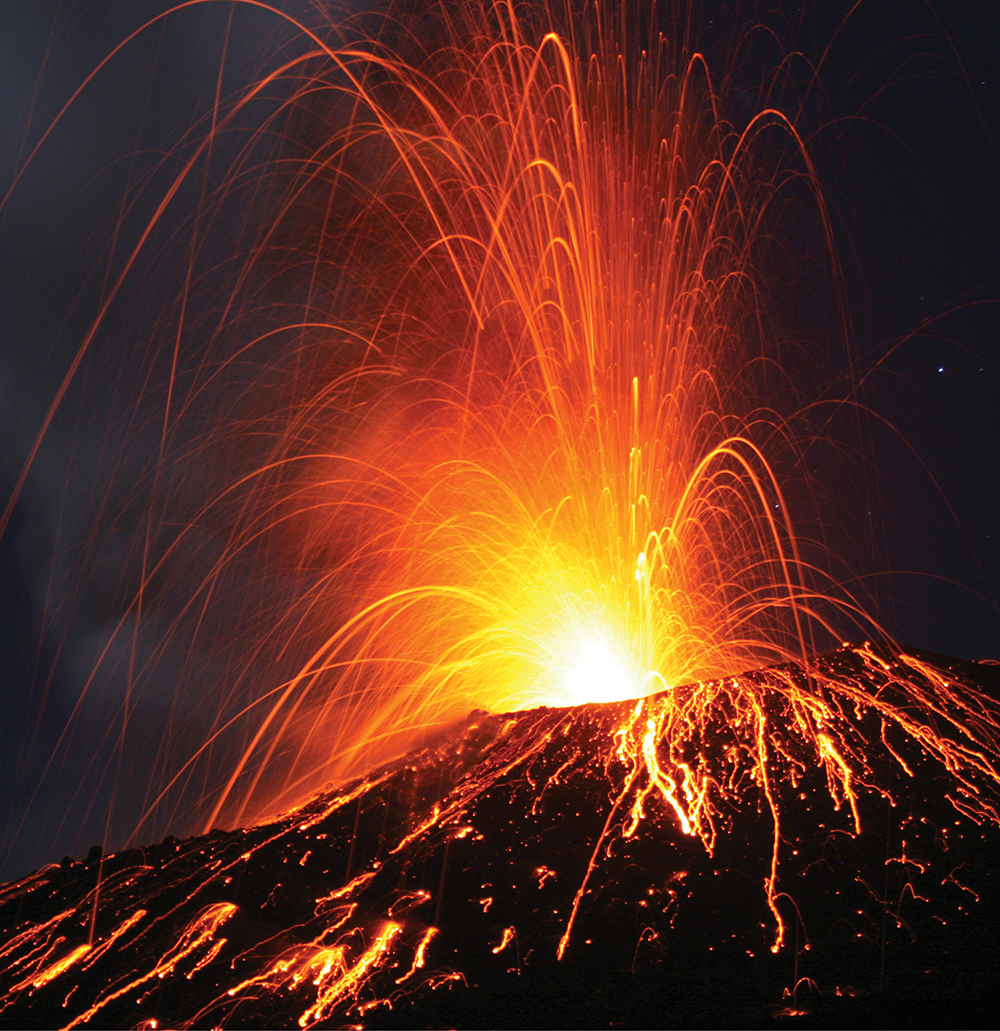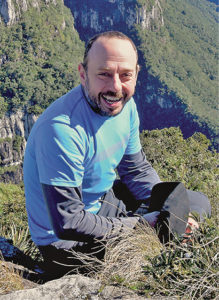
During the last stages of the most recent ice age, about 26,500 years ago, the Taupo Volcano in New Zealand experienced a massive eruption, spewing enough magma and debris to fill Lake Erie. The resulting 1,000-degree Fahrenheit cloud of gases, lava and ash traveled along the ground at the typical speed of a car along a highway, destroying everything in its path. Sulfur flew into the atmosphere, causing a drop in global temperature for several years, while a layer of ash up to a foot deep blanketed most of New Zealand’s surface.
The Oruanui eruption, as this event came to be known, is the most recent occurrence of a super-eruption, an explosive event that expels more than 450 cubic kilometers of magma. What causes these massive eruptions? And, perhaps more important, is another one looming on the horizon? Vanderbilt volcanologist Guilherme Gualda, associate professor of Earth and environmental sciences, has spent much of his career working to find out.
Gualda’s most recent research on super-eruptions brought him to the Taupo Volcanic Zone, the location of the Oruanui eruption. Before the Oruanui super-eruption, the Taupo Volcano had undergone eight large—but not “super”—eruptions concentrated in a relatively short period of 70,000 years, between 350,000 and 280,000 years ago. The recent nature of the geologic record of these volcanic events provides intact, and therefore easy-to-investigate, evidence, making the TVZ a prime location for Gualda to dig deeper into the processes that drive these super-eruptions.
In a paper published in Science Advances in October 2018, Gualda explores why the Taupo Volcano erupted in several smaller eruptions during this 70,000-year period, rather than one super-eruption. By investigating variations in glass compositions and crystal patterns in pumice rock formations, Gualda and his team determined that as a result of the progressive softening of Earth’s crust with each eruption, magma lodged itself in the Earth at shallower and shallower depths.
A key question for Gualda is determining how long a pool of magma with the potential to erupt can remain underground. “The answer from the New Zealand work is, only a few decades. Yet from other work that we’ve done, it’s perhaps a few centuries,” says Gualda. He concludes that the active nature of the TVZ favors frequent eruptions, and this consistent expulsion of magma prevents buildup to a quantity that could allow for a super-eruption.

This research advances Gualda’s ongoing project exploring how bodies of magma fuel super-eruptions. Understanding the underlying processes behind these eruptions can help scientists predict future events. “I would argue that there is no evidence today that we have a magma body that is ready to erupt in such a fashion,” says Gualda, cautioning that scientists cannot predict super-eruptions with a great degree of accuracy.
Much of Gualda’s recent research was conducted during a Maymester program that brought Vanderbilt undergraduates into the heart of the TVZ. These students became directly involved with ongoing fieldwork that supports a new understanding of super-eruptions. “It is the moments of discovery that are really the most exciting ones,” says Gualda. “We teach students how to think like field scientists.” Gualda plans to return to the TVZ with another group of students in May 2019 to continue this project.
It’s not the drama of the hypothetical impacts of a modern super-eruption that drives Gualda’s curiosity, however. To him it’s more about the pure scientific discovery of Earth’s history. “Humankind has never documented a super-eruption. We know that these things exist only because of the geological record,” he says. “To me, that’s the coolest aspect of it.”
—LILA JOHNSON
Lila Johnson is a junior majoring in the communication of science and technology in the College of Arts and Science.